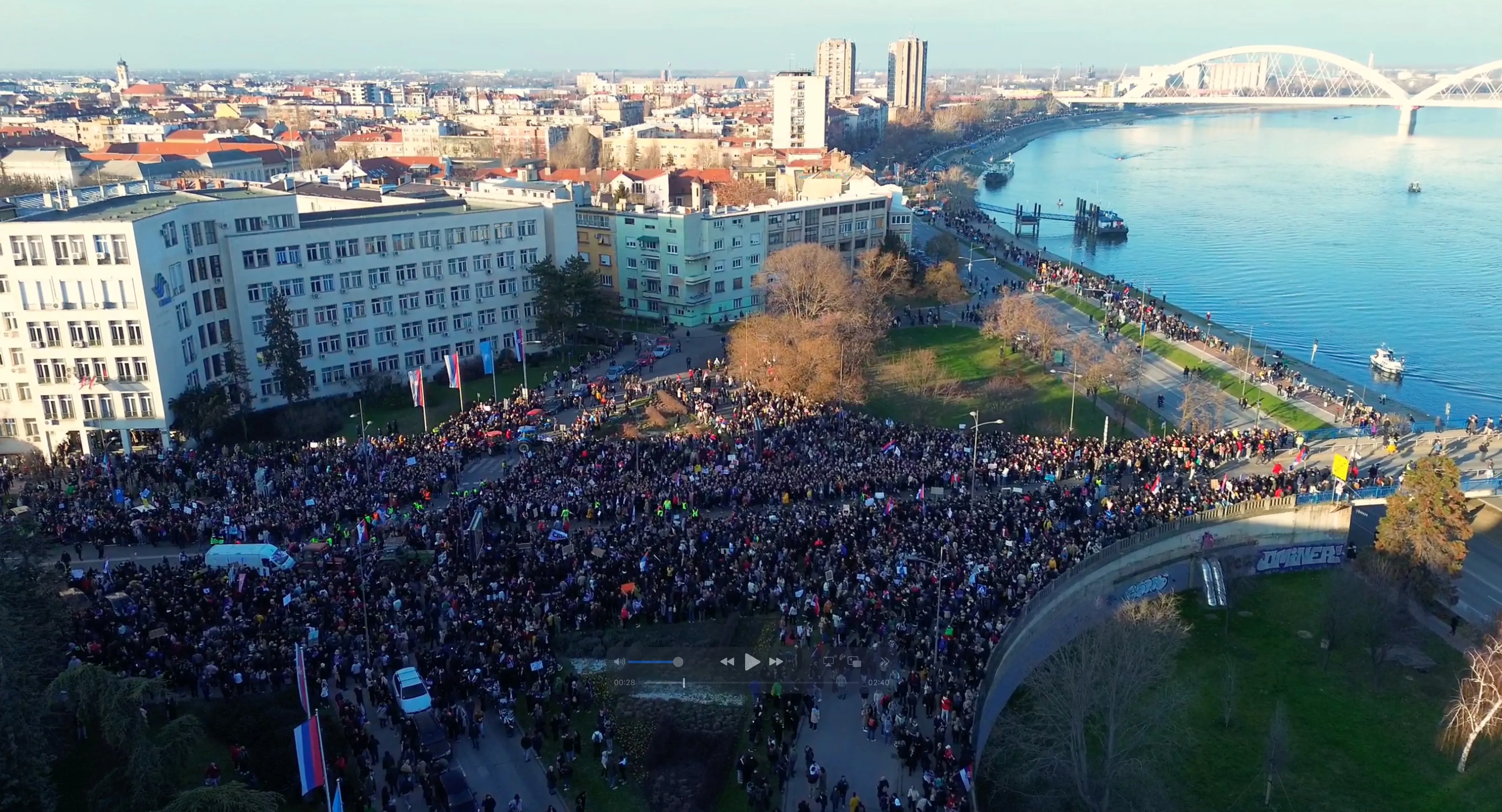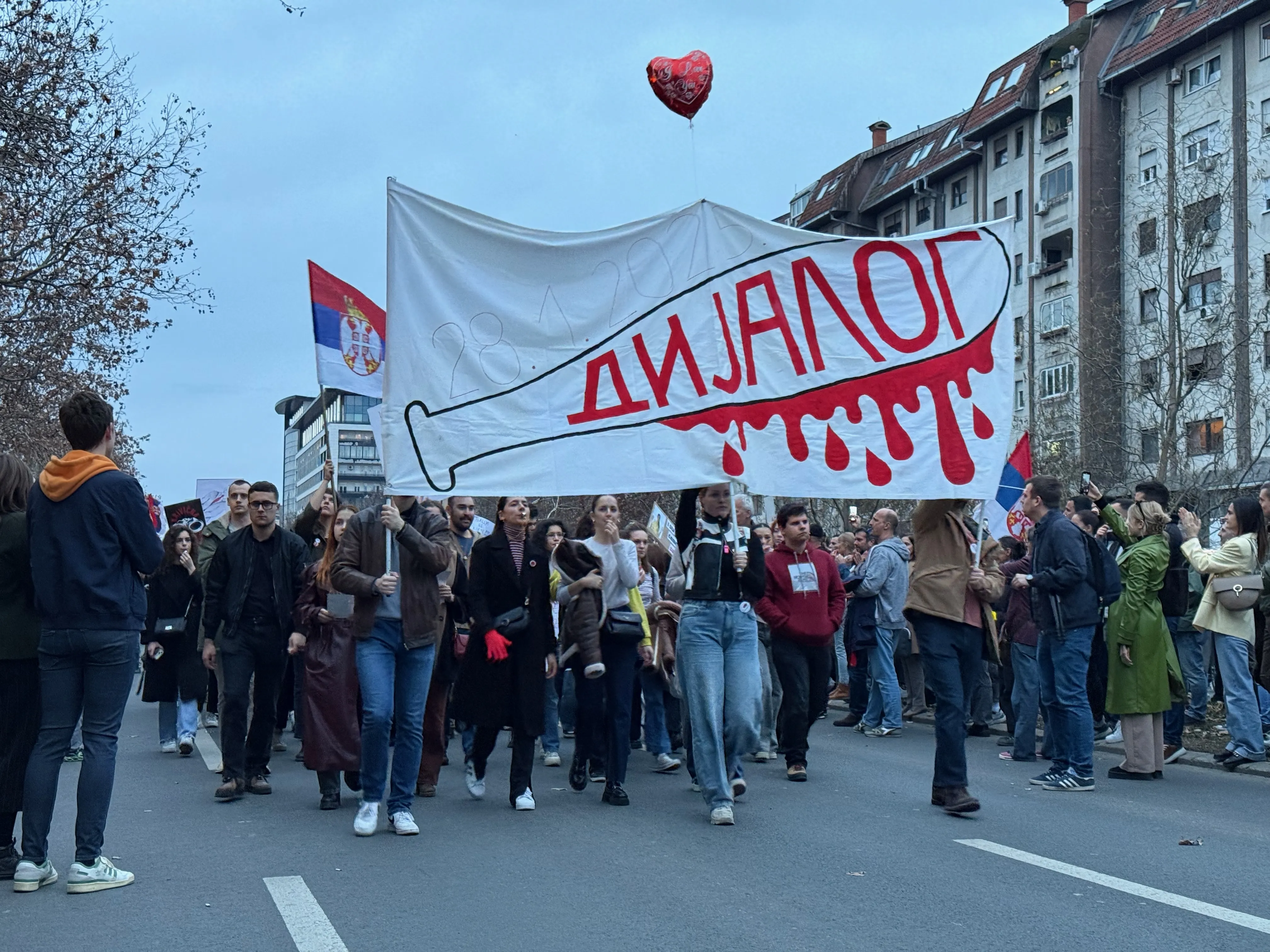Serbia's Student Revolution
Serbia is experiencing an unprecedented political protest movement.
On November 1, 2024, a 300-tonne concrete canopy collapsed at a railway station in Novi Sad, killing 15 people and severely injuring two. The root cause: terminal-stage corruption.
The railway station reconstruction project involved over 60 subcontractors—many without relevant work experience—and cost five times more than projected. The country’s president, minister of construction, and city mayor—all from the ruling party—had opened the station to the public. Documents later revealed that at the time, the station was still a construction site without a usage permit.
What followed was a unique form of political protest led by university students, which developed into Europe’s largest student-led movement since 1968.
When hooligans sponsored by the ruling party attempted to sabotage the first protests with violence, students responded by locking down the universities. Their demands were simple: publish all documentation related to the railway station reconstruction and ensure complete criminal accountability for the collapse.
For a systematically corrupt government, these demands are like Schrödinger’s cat—fulfilling them would likely put the party leadership in jail.

Waiting for students marching 80 km from Belgrade to arrive, Novi Sad, Serbia, January 31, 2025
As of this writing, hundreds of thousands of people have participated in 24-hour blockades of key intersections and bridges in Novi Sad and Belgrade. Universities remain closed, with professors joining their students. Many high schools, some elementary schools, and public kindergartens have shut down. Attorneys are on general strike. Daily protests have spread to over 200 towns and villages. When students march, they are welcomed like liberators with tears of joy and hope.
The unified message is clear: we stand with our children and support their demands.
Each day at 11:52—the exact moment when the canopy collapsed—people across the country pause their daily activities. They stand in silence for fifteen minutes, one minute for each life lost in the tragedy.
When it’s a part of a street protest, the gathering is now secured by farmers with tractors and bikers. This precaution was implemented after several incidents where people attempted to drive through the crowds and injured protesters. These attackers were presumably influenced by inflammatory government rhetoric that labeled protesters as being backed by invisible foreign powers aiming to destabilize the country.
It’s hard to describe the experience of standing in silence with twenty thousand others on a city street. The collective grief, unity, and resolve for change are palpable.
Perhaps most remarkable is the students’ organizational discipline. They have rejected all outsiders from their movement—no politicians, activists, opposition parties, or NGOs. They operate without a single leader, practicing direct democracy through plenary sessions. When speaking to media, they rotate spokespersons to prevent any individual from becoming prominent.
They cannot be provoked, frightened, defamed, or bribed.

Students marching with a banner ‘DIALOGUE’ in response to a violent incident. On the same day the government invited students to dialogue, a 23-year-old woman was attacked with a baseball bat by someone who emerged out of the ruling party’s office. Her jaw was broken. The attacker was arrested and the prime minister resigned.
The students consistently reject unconstitutional calls for “dialogue” from the country’s president—legally a ceremonial position—to negotiate their demands. They dismiss as irrelevant this man who typically dominates daily media coverage and controls everything. Instead, they insist that institutions like prosecutors and police simply do their taxpayer-funded jobs. They call for the restoration of checks and balances and the rule of law. In these dark times created by weak leadership on both sides of the political landscape, such basic demands feel revolutionary.
Eventually, this movement must culminate in both justice and political change. The timing and method remain uncertain, but consensus is building around establishing a transitional expert government with a limited term to unblock captured institutions and ensure fair elections. One thing is clear: there’s no returning to the status quo that existed before the canopy collapse.